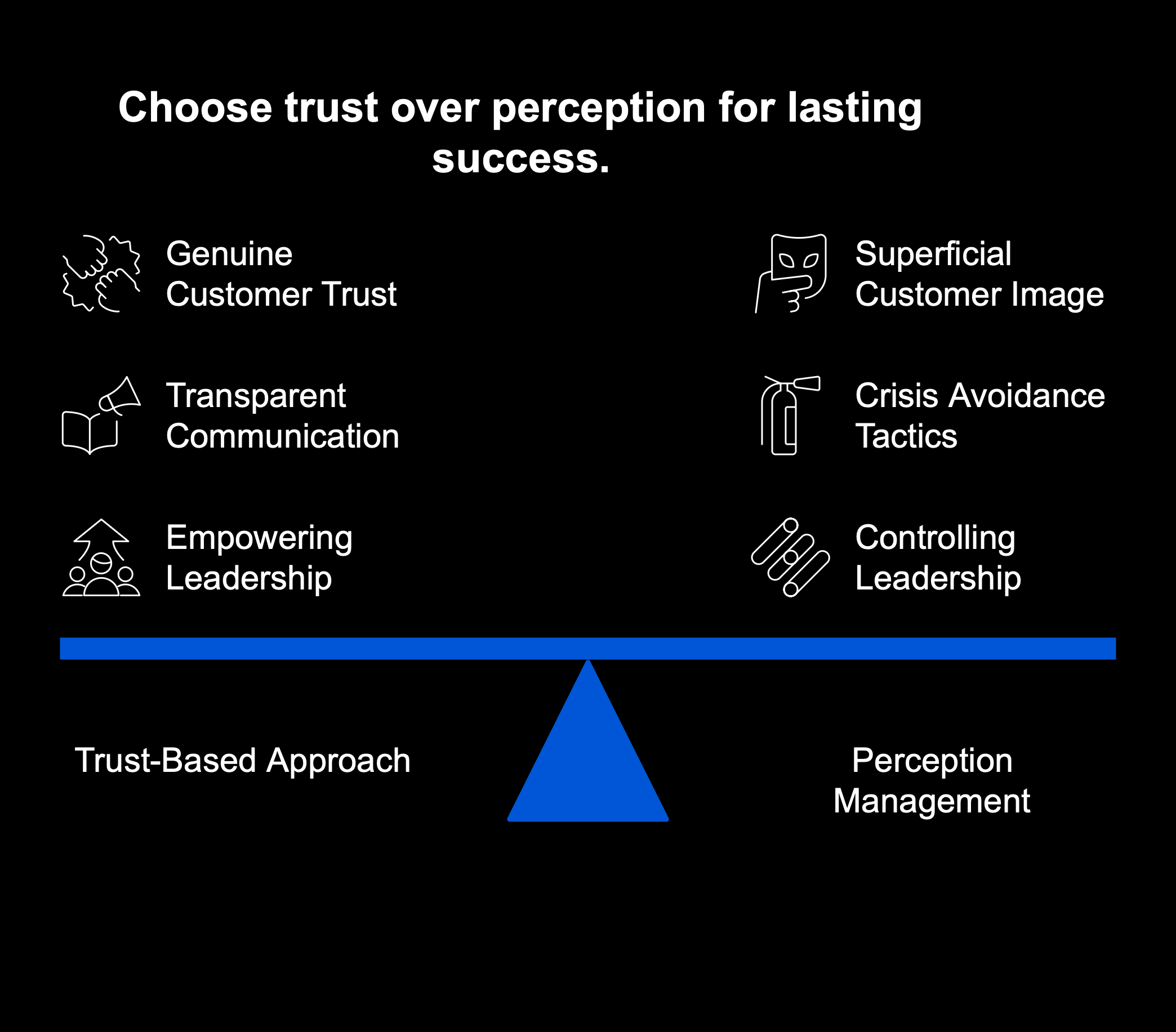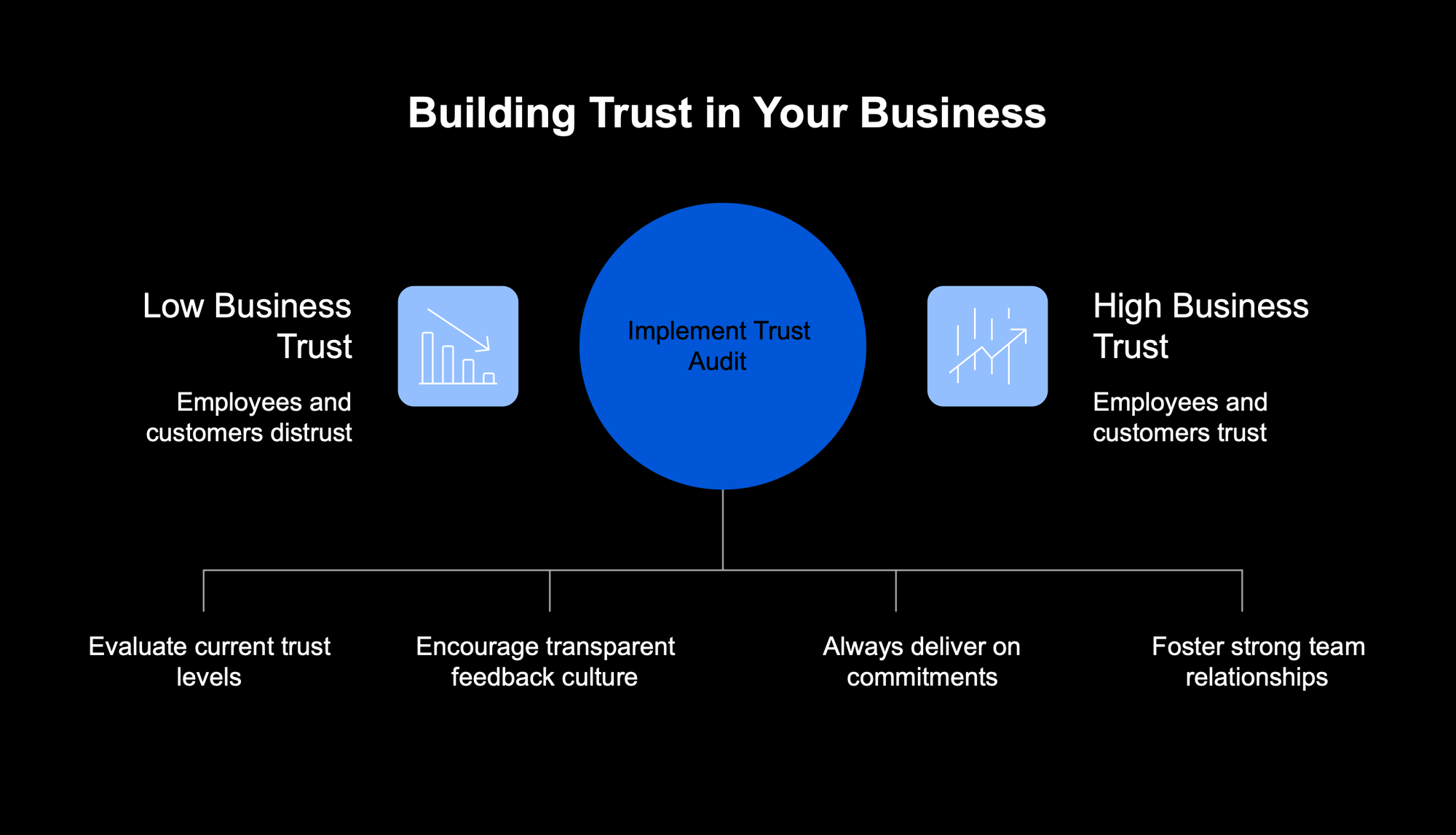Trust: The One Thing AI Can’t Fake (Yet)
Trust isn't a strategy; it's the foundation that makes every other strategy possible. When we achieved 99.8% customer retention during corporate chaos, it wasn't our technology that saved us—it was our commitment to brutal honesty wrapped in professionalism.

Trust me when I say this: most companies treat trust like a marketing slogan. They slap it on websites, weave it into mission statements, and parade it around boardrooms like a show pony. Then they turn around and treat their people (employees and clients alike) like they're five years old and can't handle the truth.
I've seen this hypocrisy destroy more businesses than bad products ever could. But I've also witnessed trust work miracles when it's authentic. Let me tell you about the time trust saved 99.8% of a customer base during what should have been a business apocalypse.
This article is dedicated to my dear colleagues, Stefan and Gloria.
When Everything Falls Apart, Trust Holds It Together
Picture this: your company gets carved up in an acquisition like a Thanksgiving turkey. One buyer grabs the staff and AI code, another snatches the customers and tech-enabled services business. Meanwhile, you're stuck in preliminary insolvency proceedings in Germany, a phrase that sounds like the title of a corporate thriller nobody wants to star in.
That was my reality. While lawyers sorted through the corporate carnage, I watched our customers, loyal partners who'd trusted us with their content transformation and publishing needs, getting treated as afterthoughts. That was unacceptable.
So I marched into the acquiring company's office and made them an offer they couldn't refuse: "Give me a team of seasoned experts, and I'll transition 90% of these customers seamlessly. Minimal disruption, maximum continuity." Bold? Absolutely. Necessary? Even more so.
Assembling the Dream Team (No Capes Required)
You don't pull off a miracle with spreadsheets and PowerPoints. You need the right people. We assembled what I now call the Trust Triangle:
The Meticulous Customer Success Director: Every detail mattered. No customer communication, timeline, or technical requirement could slip through the cracks. This person was our safety net. (Gloria, you have been one of the best Customer Success Directors I have worked with.) Here is the interview I had with her about: Effectively Manage Change and How to Prioritize When Everything Is Uncertain
The Straight-Shooting Sales Leader: My colleague embodied one principle: "Promise to deliver, deliver on promises." No spin, no corporate-speak, just brutal honesty wrapped in professionalism. He led customer calls with the kind of candor that makes people lean in, not tune out. (Stefan, you have been one of the rare seasoned sales professionals I have worked with. You are a straight-up doer and not a talker.)
The Strategic Commercial Conductor: That was me, orchestrating from the wings, ready to handle escalations and keep leadership informed. My job was ensuring everyone stayed aligned on our north star: safeguarding trust at every turn.
Three months later, we didn't just hit the 90% target; we achieved 99.8% customer retention in what I proudly called the "lift and shift." But here's the kicker: this wasn't about superior technology or slick sales presentations. We were a company acquiring an insolvent entity, owned by another company with no German presence. Any rational customer should have run for the hills.
Instead, they signed fresh contracts with a new German Entity to move forward. Why? Trust.
The Trust vs. Spin Reality Check
Here's what our customers repeatedly told us: they didn't stay for our services or tech alone. They stayed with us. They trusted that no matter what corporate chaos swirled around us (insolvency, acquisition, you name it), we'd shoot straight with them.
This brings me to Simon Squibb's brilliant framework, the three T's that matter:
Trust: Not the hallmark card version, but the real deal. The kind where you tell customers exactly what's happening, even when it's uncomfortable. The kind where you admit mistakes and fix them without deflection.
Training: Stop treating people like they can't handle complexity. Whether it's employees or clients, invest in making them smarter partners, not dependent children.
Tear Yourself Away: The hardest one for control freaks like me. Build systems and people so robust that they don't need you swooping in to save the day.
Most companies nail exactly zero of these because they're too busy managing perception instead of reality.

Why Trust Beats Every Other Strategy
A mentor once told me: "People prefer buying from people; they don't enjoy being sold to." That's the heart of it. Every slick pitch, every overly polished presentation, every corporate deflection leaves customers with that nagging feeling that something's off.
Trust isn't a strategy; it's the foundation that makes every other strategy possible. Ask yourself: Would you partner with someone you don't fundamentally trust? That uncomfortable feeling you get when something seems too good to be true? Your customers feel that, too.
During our transition, customers weren't just sticking around; they were actively helping us succeed. They provided feedback, adjusted timelines when needed, and even referred new business. That's not customer retention; that's customer partnership. And it only happens when trust runs both ways.
The Trust Audit You Need to Run
Before you dismiss this as another "soft skills" lecture, run this brutal audit on your own business:
- Do your employees trust you enough to bring you bad news without fear?
- Do your customers call you first when they have problems, or do they shop around quietly?
- When you make promises in meetings, do people write them down because they know you'll deliver?
- Would your team follow you to a new company, or are they just collecting paychecks?
If those questions made you squirm, you've got work to do.

Stop Preaching, Start Living
The context that drove our success wasn't complex: stop treating people like children, whether you're in management or partnership roles. Work genuinely with your clients. Live your values instead of laminating them on conference room walls.
Trust isn't built in boardrooms or strategy sessions. It's built in moments of crisis, in how you handle mistakes, in whether your actions match your words when nobody's keeping score.
So here's my challenge: Are you cultivating real trust in your professional world, or are you just managing perception? Are you the partner people seek out, or the vendor they tolerate until something better comes along?
Drop a comment or reach out directly. Because trust isn't just the protagonist of business success stories; it's the entire narrative that determines whether you're building something lasting or just another corporate house of cards waiting to collapse.
Stefan and Gloria, thank you both for an intense time together.
Stay Raw | Stay Real | Stay Intense.
